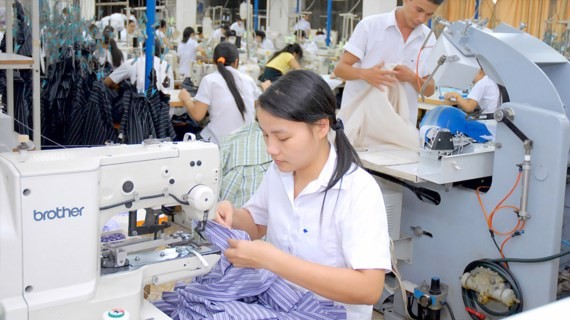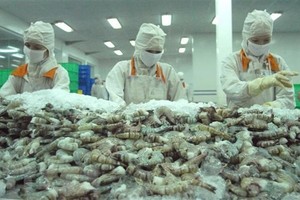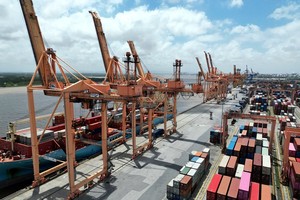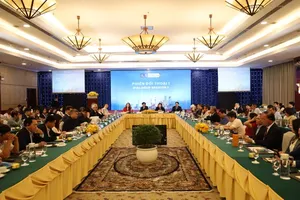
Of the revenue of $14.58 billion, fabric export contributed $1.69 billion, a year-on-year increase of 27.4 percent and clothing export made $11.84 billion, a hike of 9.1 percent compared the same period.
Le Tien Truong, general director of state-owned textile corporation Vinatex, said that the sector has made great effort while the global economy is unstable and important markets such as the US, European countries and Japan decreased imports. For instance the US market declined by 1 percent while European dropped by 2 percent and Japan reduced by 0.6 percent.
Yet, Vietnamese exports to big markets all escalated in the first six months. For instance, exports to the US reached $6 billion, a year-on-year rise of nearly 9 percent or exports to EU achieved $2.3 billion.
Unlike other exporting countries like China, India, Indonesia, Vietnam has seen growth in garment and textile exports. As per Trade Map, which provides trade statistics and market access information for export development, in the first six months of 2017, China saw a year-on-year decline of 5 percent in textile and garment sector, Bangladesh was 3.5 percent, Indonesia by 5 percent.
Though Vietnam has seen a growth, it is not sustainable because negative effect over US President Donald Trump's trade protection policies and the US’s Federal Reserve’s adjusted exchanging rate.
Le Tien Truong analyzed that export companies will have to devalue their currency to support exports like in 2016. Therefore, textile and garment exports will have no hike in the last six months of the year.
It is scheduled that the country’s sector will earn $31.3 billion, a year-on-year increase of 10.9 percent compared to 2016. Export enterprises said that the sector will face difficulties because stagnant consumption on key markets namely the US, EU and Japan.
Plus, importers placed competitive price pressure on the suppliers. Exporters are moaning of unstable orders, expenditure balance to cut the price as per the importers’ requirements.
Chairman of the Vietnam Textile and Apparel Association (VITAS) Vu Duc Giang said that to minimize upcoming difficulties. Enterprises need to eye on huge markets in the US, EU and Japan to maintain the growth speed.
President Donald Trump formally withdrew the United States from the Trans-Pacific Partnership - a 12-nation deal that had been negotiated, it is still possible for Vietnamese textile and garment sector to have growth of 9 percent and earn $800 million in the market in 2017.
Besides, Vietnam still has a chance to grow well in EU and South Korea. Furthermore, in the first six months, Russian market has grown most while the growth rate in South Korean maintained at 18 percent.
Enterprises should maximize orders with South Korea because the Vietnam-Korea free trade agreement (VKFTA) came into effect. Additionally, enterprises need to expand markets in Eastern European countries.
VITAS also called for investment to reduce expense, increase productivity and improve capability of assembly line of fabric, weaving, dying, and knitting. Moreover, enterprises should maximize fabric export, penetrate different markets and manufacture high quality fabric.
The government should balance exchanging currency to help export as well as adopt financial aids with low interest, administrative reform, infrastructure improving and cut clearance time to facilitate enterprises.











)












